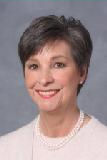|
News for the Hospitality Executive |
|
Social
Media: Tips to Get Them at
"Hello" |
| by Brenda Fields June 6, 2011 Just in the last five years, the world has changed as we know it with the ever-evolving social media platforms, which present a myriad of options for marketing, connecting, and selling and buying. Articles upon articles tell us about the increasing importance and necessity for businesses to play in the social media arena. But when it is reported that Queen Elizabeth is “tweeting”, and a CEO of a five-star hotel company sent a “tweet”, it is obvious that social media, when used unauthentically, comes off as nothing more than an ruse, without positively influencing business or creating a positive image. So how can hoteliers determine the best course of action, given the choices of social media platforms, the increasing popularity of them, and the corporate strength behind them i.e. Goldman Sachs investing in Facebook and JP Morgan Chase investing in Twitter? This article will address how to implement some good ol’ fashioned marketing strategies to ensure that your business can identify and implement the best social media platforms, whether it’s a campaign for Twitter, Facebook, Smart Phones, or Google, just to name a few, to achieve your specific goals in the most cost efficient way. Although the social media platforms are different from the tradition marketing platforms, with which many have grown up, what seems to be missing over and over are the basic tenets of marketing. The technology and its applications may be new, but the marketing principals remain the same. Whatever the platform, no matter how current, simple marketing strategies and tactics should be addressed in every case. They are: define your product; establish the positioning; determine the target audience; understand the specific demographics of the target audience; and maintain consistency in all communications. Getting back to marketing basics will help demystify some of these new social media platforms and ensure that the owner/manager focuses on what will be effective for his/or her property without wasting valuable time and resources on non-productive tactics. Product/Positioning: A realistic understanding of what you are is the first step is plotting a social media campaign. Are you a destination resort, urban boutique hotel, conference center, or a limited service property? Each of these has a specific target customer, which in turn has his/her own reason for the “buy”. This understanding allows for crafting the right message, to the right audience, on the right platform. Positioning: The second step is to understand/determine your property’s position within its competitive set. It is obvious that Cartier and Wal-Mart have different target audiences which require different marketing approaches. But how often do hoteliers just follow the lead of others without making a discerning assessment of its own positioning and target audience? My guess is that Queen Elizabeth will not be considered “cool or hip” by those that read her Tweets, but will just leave people, confused as the “product”, the message, and the platform are just too disconnected. Understanding your property’s positioning and its target audience is key to implementing a highly efficient and effective marketing program through any platform whether it be traditional, digital, or social media. Target Audience: Many properties define their target audiences as either “business” or “leisure”. While that may be a good start, it is important to understand the target audience on its most basic level i.e. demographic and socioeconomic factors, in determining which social media platform to use. Social Media Demographics Who is using which sites? According to recent research by Flowtown:
 Consistency After all the above elements are determined and a program is put into effect, it is just as critical to maintain consistency; that is, consistency in frequency of communication and more importantly, consistency in tone, look, and feel, which reflect your brand and appeal to your target audience. An urban and contemporary boutique hotel should communicate differently than a formal, five star resort and spa and vice versa. Seamless integration of the style, message, and platform is necessary to influence the desired target audience, resulting in increased business. There are really no short cuts to effective marketing. Taking the time to fully understand who you are, who your target audience is, and which social media platform will best reach the audience, will place you in a much stronger position to positively influence business. Why waste valuable time and resources when informed decisions will help you “get them at Hello”. This article was republished with the permission of HotelExecutive.com and its author and cannot be republished without its author’s permission.  About Brenda Fields: About Brenda Fields: Brenda Fields is a strategist and sales and marketing expert honed from a successful track record in the hospitality industry. Brenda is a member of the prestigious International Society of Hospitality Consultants (ISHC), recently served on the Americas Board of Directors for HSMAI, and is Immediate Past President of the Hospitality Sales & Marketing Association International. Brenda was honored as one of "The Top 25 Most Extraordinary Minds in Sales and Marketing" by HSMAI as well as the "Leadership Development" award. She is an industry leader and spokesperson; a member of the Editorial Board of HotelExecutive.com; contributes regularly to international publications Hotel News Now; Hotels Online, Hotel Resource Weekly Network News, eHoteliers, and many others. For more information visit www.fieldsandcompany.net Brenda can be contacted at 518-789-0117 or [email protected] |
|
. 1011 Smithfield Road Millerton, NY 12546 Phone: 518 789 0117 Fax: 518 789 0118 [email protected] www.fieldsandcompany.net |